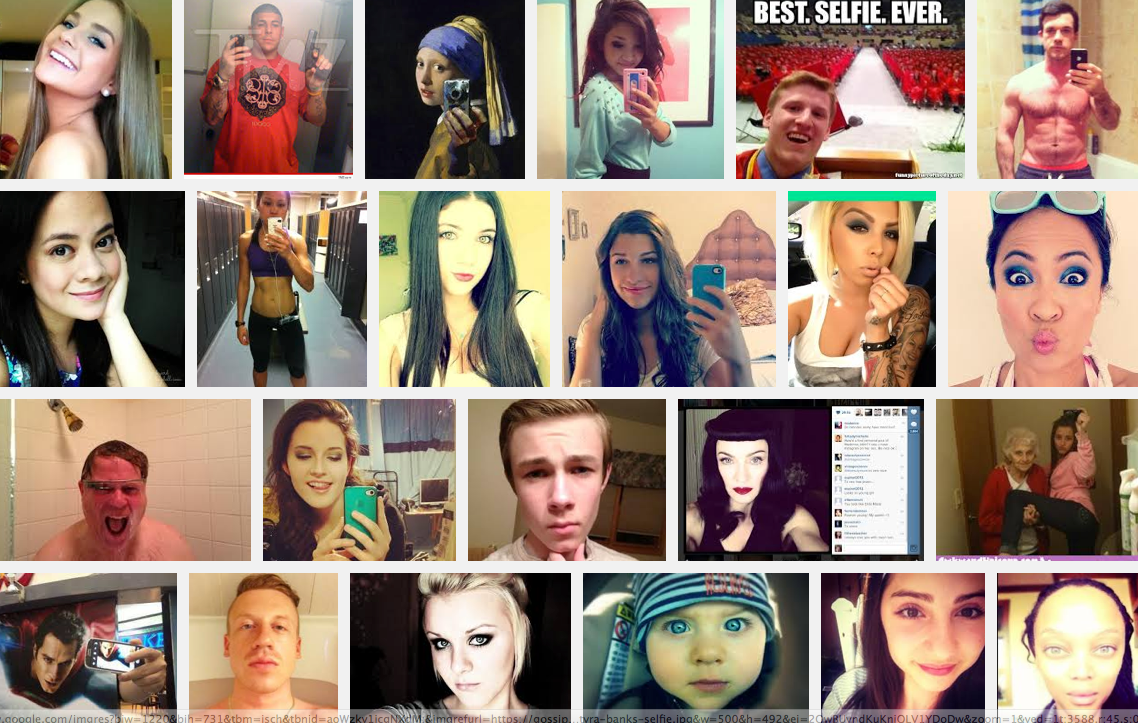Have you ever noticed that your Facebook News Feed is the digital equivalent to “It’s a Wonderful Life?” Perhaps you’ve likened your Instagram stream to that of “Lifestyles of the Digital Rich and Internet Famous.”
In each network, and across multiple social streams, you’re fed a visual buffet of seflies, travel, food, fashion, and celebrations. In assemblage, they tell the story of life well lived, or at least a life well curated. At the center of each of these experiences is the person living and sharing them in real time. Every day that passes, it seems that a growing network of our friends, family, and colleagues are charmed with this picturesque life.
Some may see this behavior as self-centered, self-promotional, or view it as a form of attention seeking, but at a human level, it’s simply a new form of self-expression and an open invitation to interact.
But who are we kidding? It’s not just everyone else, we might as well be talking about ourselves. It’s a social world after all and shared experiences are the epicenter of a growing majority of engagement. As such, we’re introduced to a new law of social physics, if you will, where for every action there is an equal or greater reaction. The truth is that social sharing is part self-expression and also part provocation. People share to communicate who they are or who they want to be, while concurrently hoping to incite a reaction that validates or substantiates their intended online persona.
This phenomenon may seem like a personal discussion, but I can assure you that it has everything to do with your business.
I’d like to officially introduce you to your connected customer. I believe it’s about time we get to know the connected set to better understand how to engage them in social and mobile networks now and throughout the entire customer lifecycle.
It’s all about you and me…but mostly me
If you’re reading this, then you’re most likely the very person you’re trying to reach. You’re connected, always on, unabashedly multitasking, and living across multiple screens each and every day. You live a digital lifestyle and without realizing it, you and others like you, are gradually exhibiting slivers of narcissism. Believe me, I say this with the utmost discretion. You can’t help it of course. These networks prompt you to share your world, your way, all day, every day. And each time we do, we contribute to our “egosystem,” where we are the center of our own digital universe. Experiences and engagement represent the orbits that bring us together.
Let’s visit planet Facebook and its orbiting moon Instagram for a moment. Facebook is now home to over one billion digital denizens. To put that in perspective, that’s roughly about 12 percent of planet Earth. Instagram is a fledgling digital society in its own right. At 100 million residents and counting, a culture of sharing one’s experiences is further enhanced by the ability to instantly enhance them with a creative filter, broadcast them across multiple networks, and earn the attention and reaction of a boundless and seemingly idle audience.
The question is, if everyone is busy sharing content, then who is consuming it? This is also the law of social attraction. It’s a reciprocal relationship where to earn reactions, one must equally or progressively react. How do you do that if the real-time web moves in real-time?
The age of prevalence
Understanding digital behavior has never known greater importance. As it evolves, we need to appreciate its velocity and impact. For example, on Facebook, conversations lose momentum in an hour, give or take. The reason for this is because people consume until they create. As they create, expectations shift as characteristics of narcissism take over. What about Instagram? Allow me to share some revealing behavioral stats that will make you say “Wow.”
Statigram is a third-party tool that tracks activity on Instagram. According to a fascinating article in pdn (Photo District News) written by Kathleen Hay, Statigram tracked the number of photos tagged “selfie,” social slang for self-portrait (yes, that’s a thing.) At 11 p.m. PST on December 28, 2012, the number of selfies numbered at a noteworthy 5.5 million. The egosystem wouldn’t be the same without the “me” in social media. At the same time, photos tagged ‘me’ completely eclipsed “selfie” with a staggering 72.6 million self-portraits. Added together, you start to get the picture of just how prominent the egosystem is becoming.
In the article, Hay introduces us to Dr. Jean M. Twenge, Ph.D. Professor of Psychology and author of Generation Me and co-author of The Narcissism Epidemic: Living in the Age of Entitlement. The titles alone convey that connected consumerism is nothing like the conventional customers you once knew. To better understand the crux of selfies and the digital “me,” Twenge explains that at the core of narcissism is this invention or aspiration that people are better or more important than in reality. In the digital realm however, perception is reality.
Agree or disagree, this is your connected customer. And in many ways, you and those you know are among them.
How can you re-imagine your engagement strategies to align with and inspire the “me” in social media? How does — or how can — your brand evoke an experience that elicits self-expression? And how will your brand become part of the egosystem and create a gravitational pull for others to orbit?
Brian Solis
Connect with me: Twitter | LinkedIn | Facebook | Google+ |Youtube | Instagram
